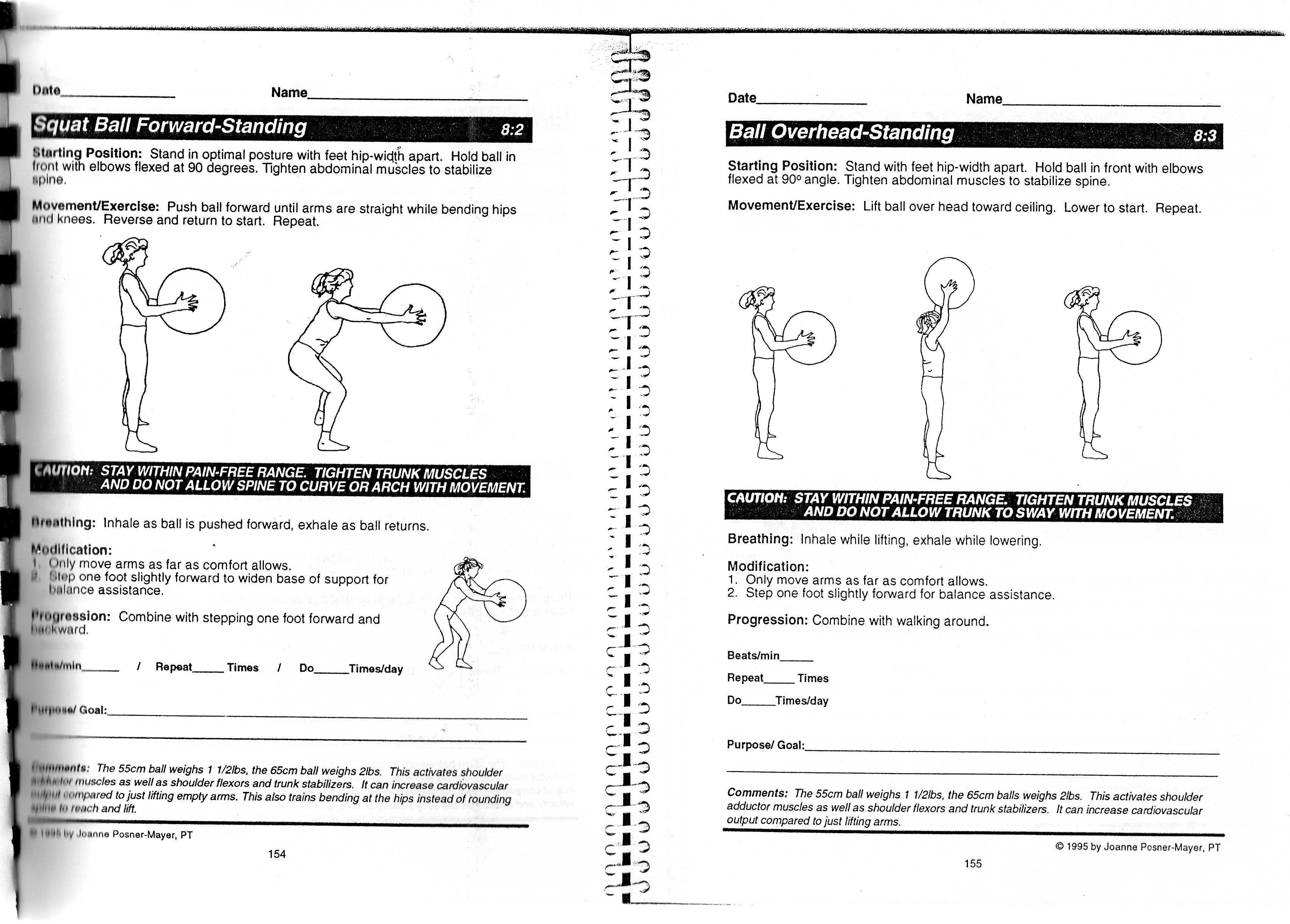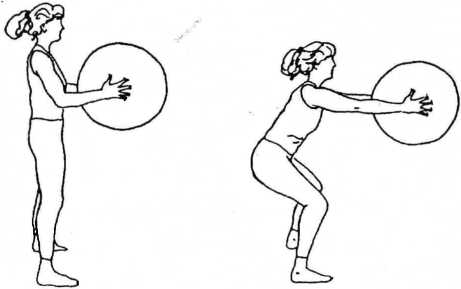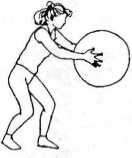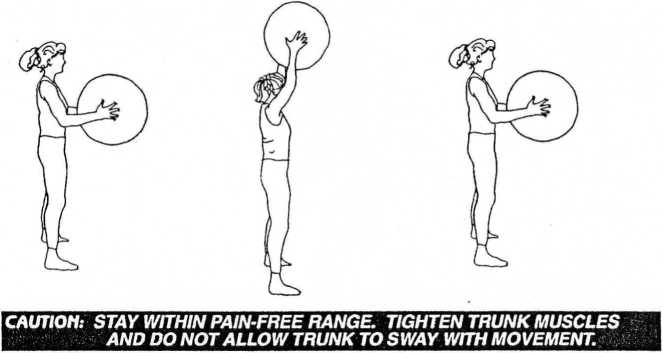img088a

Dnte_ Name
Squat Bali Forward-Standing 8:2
Mnrting Position: Stand in optimal posturę with feet hip-width apart. Hołd bali in front with elbows flexed at 90 degrees. Tlghten abdominal muscles to stabilize
•plne.
Movoment/Exercise: Push bali forward until arms are straight while bending hips und knees. Reverse and return to start. Repeat.

CAUTłON: STAY WITHIN PAIN-FREE RANGĘ. TIGHTEN TRUNK MUSCLES
AND DO NOT ALLOW SPINE TO CURVE OR ARCH WITH MOVEMENT.
Mintithlng: Inhale as bali is pushed forward, exhale as bali returns.

Miidlflcation:
l t Jnly move arms as far as comfort allows. i I Hop one foot slightly forward to widen base of support for tmlunce assistance.
i’ni(jr«8sion: Combine with stepping one foot forward and liMikward.
ii.Bin/mln_ / Repeat__.Times / Do_Times/day
Goal:
i totmtanrs: The 55cm bali weighs 1 1/2lbs, the 65cm bali weighs 2lbs. This activates shoulder i Mmi l'H muscles as wellas shoulder flexors and trunk stabilizers. II can increase cardiovascular miiimil i "mi>ared lo just lifting empty arms. Thisalso trains bending atthe hips instead ot rounding tpiiiK Iu i mich and lift.
!<y Jnsnne Posner-Mayer, PT
Bali Overhead-Standing 8:3
Starting Position: Stand with feet hip-width apart. Hołd bali in front with elbows flexed at 90°angle. Tighten abdominal muscles to stabilize spine.
Movement/Exercise: Lift bali over head toward ceiling. Lower to start. Repeat.

Breathing: Inhale while lifting, exhale while lowering. Modification:
1. Only move arms as far as comfort allows.
2. Step one foot slightly forward for balance assistance.
Progression: Combine with walking around.
Beats/min__
Repeat_Times
Do Times/dav
Purpose/Goal:.
Comments: The 55cm bali weighs 1 1/2lbs, the 65cm balls weighs 2lbs. This activales shoulder adductor muscles as well as shoulder flexors and trunk stabilizers. It can increase cardiovascular output compared to just lifting arms.
© 1995 by Joannę Posner-Mayer, PT
155
Wyszukiwarka
Podobne podstrony:
39512 img088 Bali Forward-Standing_ 8.1 Starting Position: Stand in optimal posturę with feet hip-wi
img101 Dnte___ Name.Resistive Band Knee Flexion/Hip Extension 9.10 Starting Position: Sit on bali in
img081 Datę Name. Starting Position: Sit on bali in optimal posturę. Raise arms out to sldes. Pick u
77540 img044 Datę Name.Cossack Dance _ t; 22 Starting Position: Sit correctly on bali in optimal pos
55870 img042 Datę. Name. Starting Position: Sit correctly on bali In optimal posturę. Begin Basic Bo
więcej podobnych podstron